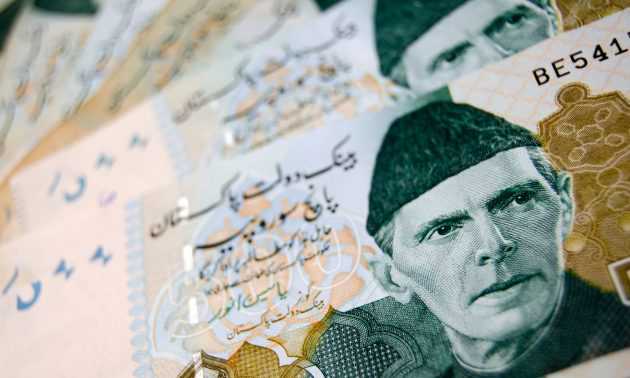Pakistan curbs imports to ease foreign exchange crisis
19 July, 2018

The State Bank of Pakistan (SBP) has moved to curb the country’s bulging imports basket to ease pressure on foreign-exchange reserves. They have tumbled to US$9.5 billion, not even enough to cover one month’s imports. This is a major crisis for South Asia’s second-largest economy.
Faced with a current-account deficit of $16 billion, the SBP on Monday slapped a 100% cash margin on 131 “non-essential” items to arrest the deterioration in the reserves position. This would discourage imports as a 100% advance payment at the time of opening of letter of credit would be hard to comply with given liquidity constraints.
“Not all the classified items are non-essential as the bank claimed because it does include items which are used as raw materials and the local industries need them to keep their wheels turning,” Abdul Basit Haji Abdul Razzak, acting president of the Karachi Chamber of Commerce & Industry, told Asia Times.
Such goods as air-conditioning parts, gum base for chewing gum, CNG (compress natural gas) kits, saddles for bikes, data-processing equipment, vehicle-suspension shock absorbers, evaporators, sealed-beam lamp units, auto bulbs and a host of other items selected by the bank were critical raw materials used by local industries. This is bound to impact their bottom lines negatively.
An SBP source told Asia Times that restrictions on imports were necessitated by “a run on the fast-depleting reserves” of the country. “The situation will go from bad to worse when external repayments worth $12.7 billion become due in 2019,” he said, adding that this year the country made repayments totaling $7.7 billion.
He claimed that if the step taken by the bank did not work, then it might impose a ban on the import of machinery and infrastructure goods. That would hamper components of the multibillion-dollar China-Pakistan Economic Corridor (CPEC) project.
Last month, Pakistan succeeded in getting a Chinese loan of $1 billion to prop up its tumbling foreign-currency reserves. The fresh loan increased the Chinese disbursement in Pakistan during this fiscal year ending June 2018 to $5 billion. Earlier, China disbursed to Pakistan $1.5 billion in bilateral loans and $2.9 billion through Chinese banks.
The CPEC has become an Achilles’ heel for the Chinese government as Pakistan’s endless demands for loans for boosting its reserves position continue to grow. Time and again Pakistani officials have warned Chinese counterparts that if its lending stops, the future of CPEC will be in jeopardy. The Chinese have warned that if Pakistan is forced to approach the International Monetary Fund, they will have no option but to unveil details of how the project was funded, and even discontinue some of the infrastructure projects already planned.
In a related development, the currency-swap deal with the People’s Bank of China has been doubled up and the SBP is encouraging commercial banks to make yuan-based transactions with Chinese counterparts.
“The Chinese initiative to replace the US dollar with Chinese currency is not going to click [for] various reasons, and the lack of interest on the part of local banking companies is one of them,” Muhammad Ishaq, a leading manufacturer and onetime director of the Khyber Pakhtunkhwa Board of Investment & Trade, told Asia Times.
Ishaq, who is also an importer from China, revealed that the commercial banks were reluctant to trade in yuan, which they think lacks stability in comparison with the US dollar.
“Unfortunately, in its craze to shore up foreign-exchange reserves and avoid a crisis, the central bank hit the small importers hard by withdrawing advance payment facilities. These items are required by cottage industries for imports without opening a letter of credit or bank guarantee,” he lamented.
He said that small and cottage industries would suffer a great deal on this count. The Pakistan Leather Garments Manufacturers and Exporters Association, he said, has already opposed the SBP’s step, which will negatively impact trade and the economy.
In order to avert a balance-of-payments crisis, the central bank quietly devalued the Pakistani rupee by 5.3% to 128 against the dollar on Monday. It was the fourth downward adjustment in the exchange rate since December and comes within days of increasing the policy interest rate by 100 basis points (1 percentage point) to pacify the internal demands and challenges faced by the economy.
In its quarterly report “The State of Pakistan’s Economy,” released last Friday, the central bank revealed that despite a recovery in exports and remittances, the current-account deficit kept on surging to reach $12.1 billion in March because of global oil prices and higher transport and machinery imports for the CPEC projects.
The bank observed that the financial inflow in the last fiscal year had failed to finance the current-account deficit, which led to a drop in SBP reserves and a 9.6% depreciation in the exchange rate in financial year 2017-18.
“On the external front, there is a need to arrange external financing in the short term and resolve structural issues affecting competitiveness in the medium and long terms,” the report says.
TAG(s):
